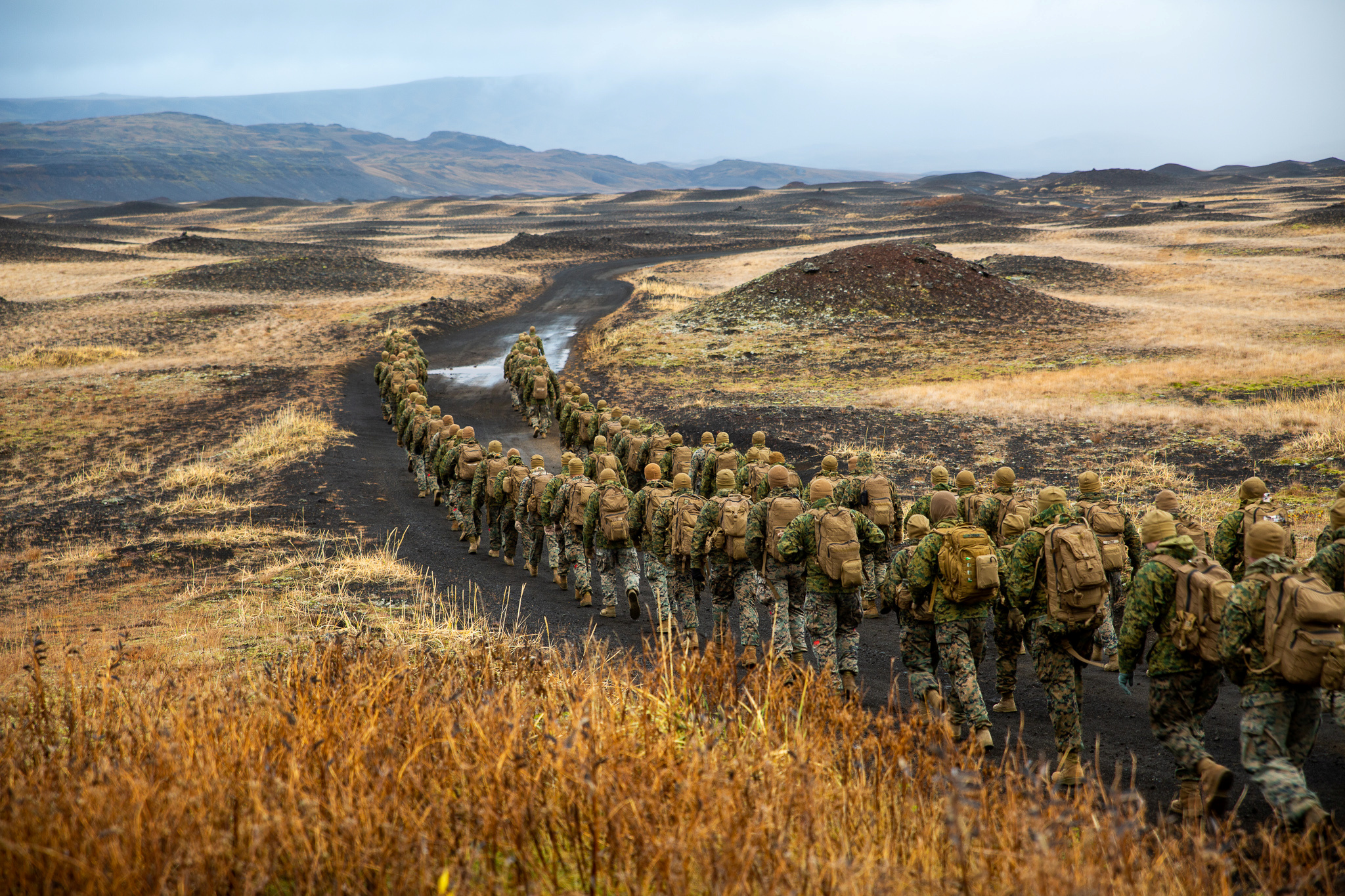U.S. Arctic defense strategy ramps up rhetoric without committing resources, experts say
The U.S. Department of Defense document calls upon international allies, but those partners need to balance their own strategic needs, experts say.

The U.S. Department of Defense (DoD) released its updated Arctic strategy last week. The 19-page document focuses on the threats posed by Russia and China in the region, and it stresses the importance of international partners, especially NATO.
But some say the strategy is more rhetoric on the great power competition from the Trump administration without solid recommendations — or resources — for addressing these challenges. And others worry that putting the rhetoric into practice will put a strain on allies’ relationships with the U.S., China and Russia.
Like the Navy’s Arctic strategy, the DoD characterizes the risk of conflict in the Arctic as “low.” But a rapidly changing region — both in terms of the physical environment and the accompanying shifts in geopolitics — “could adversely affect U.S. national security interests, promote instability, and ultimately degrade security in the region,” the document says.
While the DoD’s stated goal is to promote stability and peace in the region, it also calls out Russia’s increasing military and economic activity in the region as well as China’s claims to be a near-Arctic state, a position the U.S. does not recognize. The strategy positions Chinese and Russian competition in the Arctic as “the principal challenge to long-term U.S. security and prosperity.”
[A new U.S. Defense Department Arctic Strategy sees growing uncertainty and tension in the region]
The U.S. sees the Arctic primarily as a region vulnerable to “strategic spillover” from potential conflicts in the Indo-Pacific and European theaters. “Protecting U.S. national security interests in the Arctic will require the Joint Force to sustain its competitive military advantages in the Indo-Pacific and Europe,” the strategy says. On May 31, a few days before the release of this document, the DoD also released a much longer Indo-Pacific strategy, which mentions Russia and China as the primary source of potential conflict in the circumpolar North.
For Heather Conley, senior vice president for Europe, Eurasia, and the Arctic at the Center for Strategic and International Studies, the new Arctic strategy contained few surprises.
“Nothing has changed,” she told ArcticToday. Although the strategy more accurately describes the changing Arctic landscape, there are no corresponding shifts in approach or resources or strategy, she said.
“There was just not too much in there,” Conley said.
She pointed to similarities in the Coast Guard’s updated strategy, especially around Russian and Chinese influences.
“And then it just proceeds as if there was nothing really different,” she said. “Because its strategy has not changed at all.” This updated document, she said, is much like the previous DoD Arctic strategy, which also focused on potential shifts in the region without committing additional resources to addressing these challenges.
“For me, what’s so striking is that Secretary Pompeo’s speech in Finland last month was really hard-hitting,” Conley said. “And if we were that concerned, you would start seeing some shifts” — for instance, constructing a deep-water port in the Arctic or enhancing the surface fleet with ice-hardened vessels.
Like updated strategies from the Coast Guard and the Navy, this strategy falls short, Conley said.
“No one seems to have the political will or leadership to assign a budget,” she said, “and say, ‘This is what we need. This is what we’re going to achieve.’”
[Nome eyes a significant port expansion — but critics wonder if it will be enough]
Instead, the strategy relies upon foreign partnerships to fill gaps in the Arctic. The Greenland-Iceland-United Kingdom (GIUK) gap expands to include Norway, an ally that is mentioned several times.
But Andreas Østhagen, a researcher at the Oslo-based Fridtjof Nansen Institute, points out that countries like Norway must have much more nuanced relationships with Russia, with which it shares a land border.
“If the U.S. is not recognizing these dimensions of the relationship that are extremely important to Norway,” he said, “it makes the nuances of the Norwegian relationship more difficult.”
Norway must cooperate with Russia on cross-border issues, search-and-rescue, oil spill preparedness, oil and gas development, environmental issues and trade in the region, Østhagen told ArcticToday. And Norway also needs to maintain stable and relatively friendly diplomatic relationship with Russia, he said.
[Norway wants to help modernize Russia’s fishing fleet]
The DoD strategy is a concern for Arctic stability, he said, because it begins putting the Trump administration’s rhetoric into action, forming the basis of how the U.S. views its priorities, and therefore its actions, in the region.
The 2018 U.S. national defense strategy omitted the Arctic entirely. This additional strategy was drawn up only required by Congress called on the DoD to do so.
“DoD wouldn’t have done this on its own if it hadn’t been a requirement,” Conley said. It’s another way in which Congress is pushing the administration to do more in the Arctic, she said, “and it just continues to not want to do that.”
Conley said part of the problem is that the U.S. has a very diffuse unified command plan for the Arctic, which makes it difficult for a military leader or service to take responsibility for it.
“And all of this to me feels like we are already in the late-to-need category,” she said. “When we realize we have a problem, it will already be too late because we simply don’t have any capabilities to get there.”